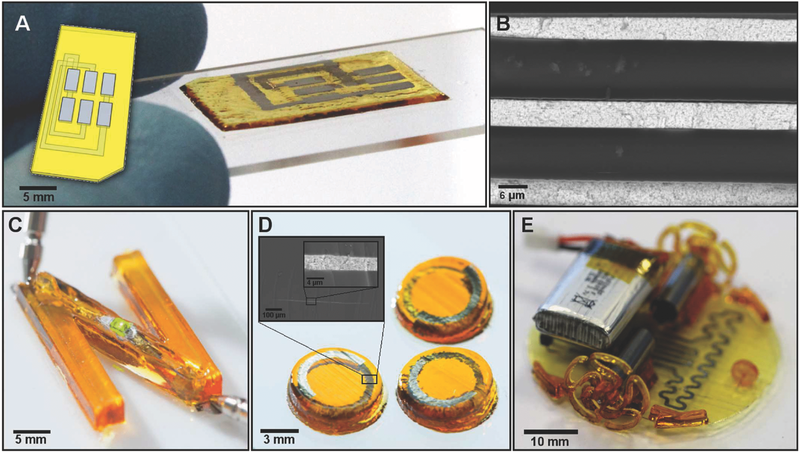Multifunctional Additive Manufacturing (MFAM) champions the development of single step 3D printing using multiple materials. Due to its nature, MFAM is ideally suited to the fabrication of electronic components, as they typically require step by step assembly of conductive and non-conductive parts.
Researchers at the University of Nottingham’s Centre for Additive Manufacturing (CfAM) are leading efforts in the development of an MFAM process. In the most recent publication from CfAM, the team demonstrates how UV light can be used to 3D print photopolymers and “rapidly process and sinter” silver nanoparticle (AgNP) inks to make electronic objects.
Combining silver and resin
The University of Nottingham’s single step 3D printing process is based on inkjet technology, a method that “offers scalability through a droplet on demand (DoD) regime.” In this particular study, two inks are deposited, an insulating (dielectric), UV curable resin, and an electrically conductive AgNP ink. Loaded into two separate printheads, the process is described as follows:
“The dielectric ink was printed and cured in real time through UV irradiation over the sample after each jetting pass or swathe. This swathe by swathe curing was able to produce fine polymeric surfaces. The silver ink was sintered by scanning the UV light over the deposit after each layer was completed.”

________
As a demonstration of complexity, CfAM researchers made four sample products with the MFAM technqiue: a small security chip; a conductive letter N; helix tracks within a tube; and a two wheeled robotic car.
According to Chris Tuck, Professor of Materials Engineering and key member of the Additive Manufacturing and 3D Printing Research Group at Nottingham, the demos show that “Being able to 3D print conductive and dielectric materials in a single structure with the high precision that inkjet printing offers, will enable the fabrication of fully customised electronic components,”
“You don’t have to select standard values for capacitors when you design a circuit, you just set the value and the printer will produce the component for you.”

A scientific breakthrough
CfAM director Professor Richard Hague closes comments stating,
“This breakthrough has significant potential to be the enabling manufacturing technique for 21st century products and devices that will have the potential to create a significant impact on both the industry and the public.”
More information and results of Nottingham’s MFAM approach can be read in the journal of Advanced Materials Technologies. The article, titled “3D Inkjet Printing of Electronics Using UV Conversion” is co-authored by Ehab Saleh, Fan Zhang, Yinfeng He, Jayasheelan Vaithilingam, Javier Ledesma Fernandez, Ricky Wildman, Ian Ashcroft, Richard Hague, Phill Dickens and Christopher Tuck.
For more of the latest 3D printing research updates subscribe to our free newsletter, follow us on Twitter and like us on Facebook. Get involved with 3D printing events near you.
Featured image shows a sample of MFAM made electronic parts. Image via Advanced Materials Technologies



